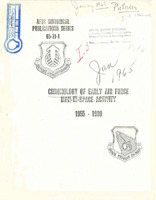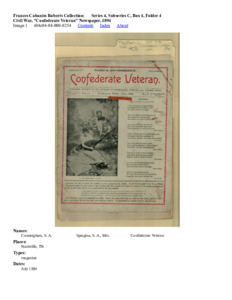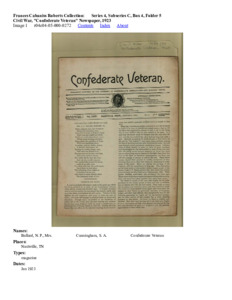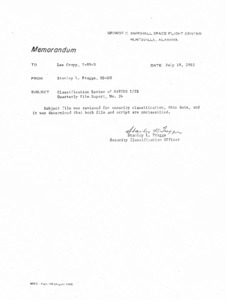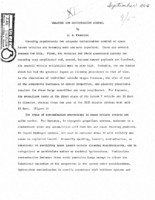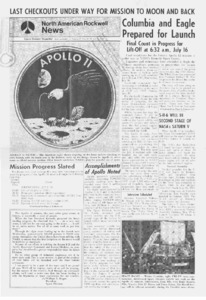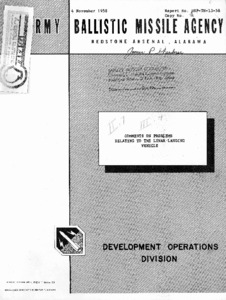
Browse Items (8239 total)
Sort by:
-
"Christmas 1968 Part I."
First part of video shows Kerry and Klaus playing with Kerry's new drum set that he got for Christmas. The latter half of the film shows Kerry being sat down for dinner by Betty. Monte Sano, Huntsville, Alabama. Winter 1968. -
"Christmas 1968 Part II."
First part of film shows Kerry eating and drinking at a table with Ingeborg Dannenberg. Second part shows Kerry opening and setting up a toy train track with Klaus Dannenberg. Monte Sano, Huntsville, Alabama Winter 1968 -
"Chronology of early Air Force man-in-space activity: 1955 - 1960."
The foreword states "In this chronology, Air Force manned space flight activity is viewed from the perspective of the ballistic missile development agency - the Air Research and Development Command's Western Development Division, later re-named the Air Force Ballistic Missile Division. Due to resource limitations at the Space Systems Division historical office, research for this chronology has been generally limited to materials available in the files of that office. All documents cite in the notes which follow each entry are located in the archives of the Historical Division, Office of Information, Space Systems Division, in Los Angeles California." There are handwritten notes throughout. -
"Classification review of Saturn I/IB quarterly film report, no. 24."
Memo to Lee Cropp, I-RM-D concerning security classification. -
"Cleaning and Contamination Control."
The document is a paper describing contamination cleaning methods and advocating for further developments in the field. Tables and figures are included at the end of the paper. The figures include a comparison of Saturn V with Saturn I and Saturn IB and cross-sections of the Saturn C-5, S-IC stage fuel tank assembly and oxidizer tank assembly. -
"Columbia and eagle prepared for launch."
A news article detailing the scheduled launch for the Apollo 11. "Eagle" is the name of the lunar module and "Columbia" is the name of the service module. -
"Comments on Problems Relating to the Lunar-Landing Vehicle."
"This technical note concerns some of the problems encountered with the landing of a payload on the moon. The main problem areas such as guidance, velocity control and impact considerations are discussed. Although no final conclusions or designs are intended, it is hoped that the material presented will serve as a guide for future detailed work."

